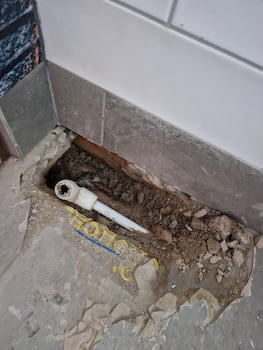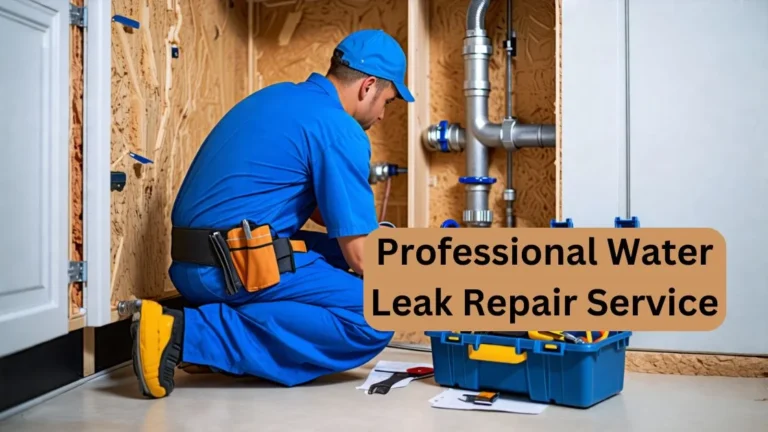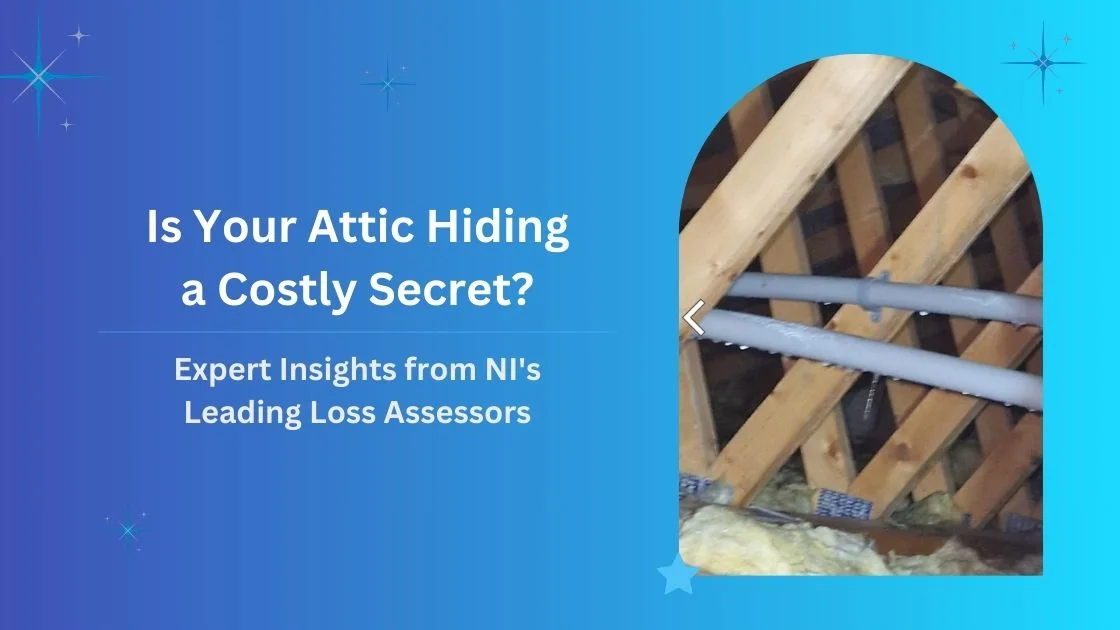Dealing with a water leak can be daunting, but knowing the right steps can make the repair process manageable. In this guide, we’ll walk you through each stage of professional water leak repair, ensuring you have the knowledge to tackle leaks efficiently and effectively.
- Professional water leak repair begins with the prompt identification of leaks through visual signs and monitoring water meter readings.
- Once detected, assess the severity to determine the best repair strategy. Employ techniques ranging from epoxy putty for temporary solutions to replacing damaged pipe sections for permanent fixes.
- Advanced detection methods, such as thermal imaging, can uncover hidden leaks efficiently.
- Engaging licensed plumbers ensures expert intervention and preventative maintenance.
- Address any water damage promptly to minimise long-term effects.
By following these steps, you can safeguard your property and enhance plumbing efficiency, leading to more effective leak management strategies.
Key Takeaways
- Identify the source of the leak by checking for damp patches, mould, or unusual water meter readings during periods of no usage.
- Assess the severity of the leak using advanced tools, moisture detection, and visual inspections to prioritise repairs effectively.
- Implement temporary repair solutions, such as epoxy putty or rubber sleeves, to prevent further damage until permanent fixes can be made.
- Execute permanent repair methods, including replacing worn washers, cutting out damaged pipes, and ensuring proper seal maintenance in toilets.
- Engage professional plumbing services for effective leak detection and repairs, ensuring the use of advanced technology and expertise in various plumbing systems.
Water Leak Identification
Identifying water leaks promptly is crucial to preventing extensive damage and costly repairs. Effective leak detection begins with recognising initial signs such as damp spots, mould growth, and water stains on walls or ceilings.
Regular moisture assessment through monitoring water meter readings can reveal hidden leaks that may not be immediately visible. Furthermore, common leak sources like faulty taps, worn toilet seals, and corroded pipes warrant routine inspection.
Employing dye tablets in toilets can further enhance leak detection by indicating colour changes in the water tank. It is essential to differentiate between actual leaks and moisture-related issues, such as condensation, to avoid unnecessary repairs and expenses.
Common Leak Repair Techniques
Addressing water leaks effectively requires a clear understanding of both temporary and permanent repair techniques.
Identifying the source of the leak is essential, as it informs the best approach, whether it be using epoxy putty for immediate relief or replacing worn components for a lasting solution.
Implementing these strategies not only mitigates current issues but also prevents future complications, ensuring a more efficient plumbing system.
Identifying Leak Sources

Leaks in plumbing systems can arise from a variety of common sources, such as taps, toilets, and pipes, often leading to significant water damage if left unaddressed.
Regular tap inspection is essential; look for signs like damp patches or corrosion that may indicate a failing seal or worn washer.
For toilets, proper maintenance can prevent leaks; using dye tablets can help identify issues, as a colour change in the bowl signals a faulty flapper or seal.
Furthermore, monitoring water meter readings during periods of no use can reveal hidden leaks.
Temporary Repair Solutions
Once a leak has been identified, taking swift action with temporary repair solutions can prevent further damage and provide immediate relief.
One effective method is employing epoxy putty, which can be moulded around the leak to create a strong seal. For larger leaks, rubber sleeves secured with clamps offer a quick fix, ensuring water flow is temporarily halted.
Moreover, duct tape and pipe repair tape can be wrapped tightly around damaged areas to provide short-term protection. For leaky taps, plumber’s tape on threaded connections can effectively minimise water escape until permanent repairs are arranged.
Using a bucket to catch dripping water during these repairs is also advisable to manage leaks and protect surrounding areas from damage.
Permanent Fix Methods
How can homeowners effectively ensure their plumbing systems remain leak-free? Permanent fix methods are vital for long-term solutions.
For leaky taps, performing a washer replacement is essential; disassemble the tap, replace worn components, and verify proper reassembly to prevent future leaks.
In the case of leaky pipes, cutting out the damaged section and using a slip coupling to connect new pipe ends guarantees durability and compliance with local plumbing regulations. Ever wondered how you can diagnose a pipe leak?
Toilets often require seal maintenance, including replacing old seals, cleaning surfaces, and applying plumber’s putty for an airtight fit.
For roofing leaks, replacing damaged tiles and applying waterproof sealant are crucial.
Regular inspections will minimise leaks, fostering a sense of security and belonging for homeowners.
Hidden Leak Detection
Detecting hidden leaks is essential for maintaining the integrity of a property and preventing costly damage. Employing advanced leak detection technologies is vital for identifying issues before they escalate.
- Monitor water meter readings for unusual changes.
- Use thermal imaging cameras and moisture detection methods to locate leaks without causing damage.
- Implement acoustic leak detection methods that utilise sound waves to pinpoint plumbing leaks.
- Consider tracer gas detection to identify leaks through escaping gas.
Regular inspections of high-risk areas, such as basements and around plumbing fixtures, can help catch hidden leaks early.
Assessing Leak Severity
After identifying hidden leaks, the next critical step is to evaluate their severity to understand the potential impact on your property.
By employing advanced leak detection tools and moisture assessment techniques, you can assess the extent of water damage on walls, ceilings, and floors.
Look for symptoms such as persistent dampness, unusual running water sounds, and visible mould growth, as these indicators can reveal significant issues.
A sudden spike in water bills also warrants immediate investigation, as even minor leaks can escalate into costly problems, including concerns regarding structural integrity.
Professional Plumbing Services
When faced with water leaks, why risk further damage by attempting a DIY approach?
Professional plumbing services not only guarantee the effective repair of leaks but also utilise advanced plumbing technology, such as thermal imaging and moisture meters, to detect hidden issues.
By hiring a licensed plumber, you benefit from:
- Expertise in diverse plumbing systems
- Compliance with local plumbing regulations
- Timely interventions to prevent further damage
- Emergency response options for urgent leaks
Engaging a professional not only saves time and money but also provides valuable insights into preventative maintenance, enhancing the longevity of your plumbing system.
Trust in skilled plumbers to deliver high-quality, lasting solutions, safeguarding your home against future leaks and costly repairs. Learn more about our water leak repair process.
Preventative Maintenance Tips
Preventing water leaks starts with proactive measures that homeowners can implement to protect their plumbing systems. Regularly inspect visible pipes, taps, and fittings for signs of wear, corrosion, or moisture. This vigilance allows you to address issues before they escalate into costly leaks.
Implementing tap maintenance by replacing old washers and seals every few years can greatly reduce the risk of deterioration-related leaks.
Additionally, insulating pipes in unheated areas is vital during winter months to prevent freezing and subsequent bursts. Scheduling periodic professional plumbing inspections at least once a year guarantees that potential problems are identified early, maintaining compliance with local plumbing regulations.
Addressing Water Damage
Addressing water damage requires a swift assessment of the severity to determine the necessary repairs for affected materials.
Immediate action is critical, as different materials react distinctly to moisture, influencing the repair strategy.
Assessing Water Damage Severity
The urgency of evaluating the severity of water damage cannot be overstated, as timely appraisal is essential for effective remediation.
A thorough damage assessment involves a careful moisture evaluation to identify the extent of deterioration. Key indicators to observe include:
- Dampness on surfaces
- Mould growth in hidden areas
- Discolouration on walls and ceilings
- Unexplained increases in water bills
Water damage can be classified into three categories: Class 1, which indicates minimal damage; Class 2, where an entire room is affected; and Class 3, which signifies severe damage impacting ceilings, walls, and insulation.
Understanding the severity helps prioritise repairs and mitigate escalating costs, which can range from £500 to £3,000.
Prompt action is crucial to protect your home and finances.
Repairing Affected Materials
When tackling water damage, a meticulous approach to repairing affected materials is essential to ensure both safety and longevity.
Begin by evaluating the extent of damage across different materials, as their resilience to moisture exposure varies considerably. Severely affected plasterboard or insulation should be promptly removed and replaced to prevent mould growth and structural complications.
Employ dehumidifiers and fans to dry damp areas, effectively reducing humidity levels and safeguarding against further degradation.
For wooden surfaces, clean them with a mild detergent and water mixture, and consider applying a wood preservative for enhanced protection against future moisture-related issues.
Ultimately, routinely monitor the repaired area for any signs of recurring moisture or mould to ensure long-term stability and integrity.
Cost and Insurance Considerations
Understanding the financial implications of water leak repairs is essential for homeowners facing unexpected damage. The costs can vary considerably, typically ranging from £400 to £2,400. Several factors influence these expenses:
- Severity and location of the leak
- Extent of water damage
- Accessibility of the repair site
- Necessary replacement materials
Home insurance policies may provide some coverage for repairs, but it is important to review your specific terms.
Promptly reporting water damage to your insurer is critical to avoid denied claims.
Furthermore, exploring repair financing options can ease the burden. Obtaining multiple quotes from licensed plumbers not only helps in comparing costs but ensures compliance with local plumbing standards, eventually fostering peace of mind throughout the repair process.
Need a water leak fixed fast and effectively?
Our professional leak repair service in Northern Ireland follows a proven step-by-step process to diagnose, repair, and prevent future issues. With expert tools and thorough inspections, we’ll ensure your home is protected from further damage and costly repairs.
Don’t wait for the problem to get worse—contact us today for a professional water leak repair that’s done right, the first time.
P.S. Every step counts in preventing future water damage. Let our experts handle the repair and give you peace of mind. Call now for a comprehensive leak assessment!



